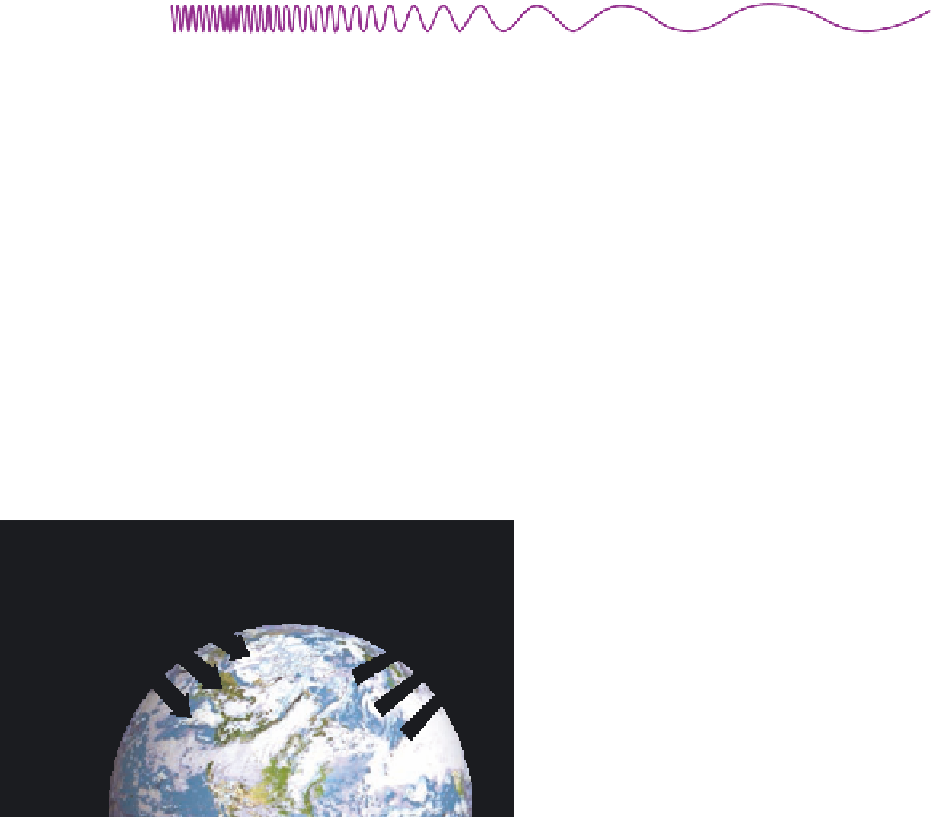Geoscience Reference
In-Depth Information
0.4 �m
violet
0.7 �m
red
Visible light
Microwaves
Radar
Gamma
rays
Ultra-
violet
X-rays
Infrared
TV, radio
0.001 0.01
0.1
1
10
0.1
10
100
0.1
1
10
1
10
100
Nanometers
Micrometers
Centimeters
Meters
Shorter waves
Longer waves
Figure 4.2 The electromagnetic spectrum.
Wavelengths range from gamma rays, which are the shortest, to long radio waves.
The second principle of electromagnetic radiation is that
a
direct
relationship exists between the absolute temperature
of the object and the amount of radiation it emits. This re-
lationship is described by the Stefan-Boltzmann law and
means that hotter objects emit more radiation than cooler
ones. As a result, Earth emits much less radiation than the
Sun. This temperature/emitted radiation relationship is ex-
ponential, meaning that a small temperature increase in an
object results in very large increases in emitted radiation.
For example, you have probably experienced how a blacktop
or concrete surface emits much more radiation, and is there-
fore much hotter, than a plowed field or grassy park that it
might surround. This higher release of radiation takes place
because the highway or sidewalk is warmer than the field or
park.
solar Energy and the solar Constant
As we discussed in Chapter 3, solar energy is created in vast
quantities by nuclear fusion within the Sun. This energy
works its way to the surface of the Sun, where it is emitted as
electromagnetic radiation. From this point this energy trav-
els along straight lines (or rays) through space at the speed
of light.
Given that the Sun produces energy at a nearly constant
rate, the output of solar radiation is also nearly constant. Al-
though some variability in solar output occurs due to the wax-
ing and waning of energy production within an 11-year solar
cycle, the overall output of solar energy is considered to be
consistent over time. As a result of this generally constant pro-
duction and emission, the amount of solar radiation received
in an area of fixed size in space (outside Earth's atmosphere),
and at right angles to the Sun, is also constant. This amount of
received energy, which is referred to as the
solar constant
, has
a value of about 1370 watts per square meter (W/m
2
) at the top
of the atmosphere.
Shortwave radiation
from Sun (visible, UV,
near infrared)
Longwave radiation
from Earth (thermal
infrared)
Figure 4.3 Radiation to and from Earth.
Earth receives short-
wave radiation from the Sun. Some of this radiation reaches the
surface of Earth where it is absorbed and then emitted as long-
wave energy.
solar constant
The average amount of solar radiation
(~1370 W/m
2
) received at the top of the atmosphere.







































